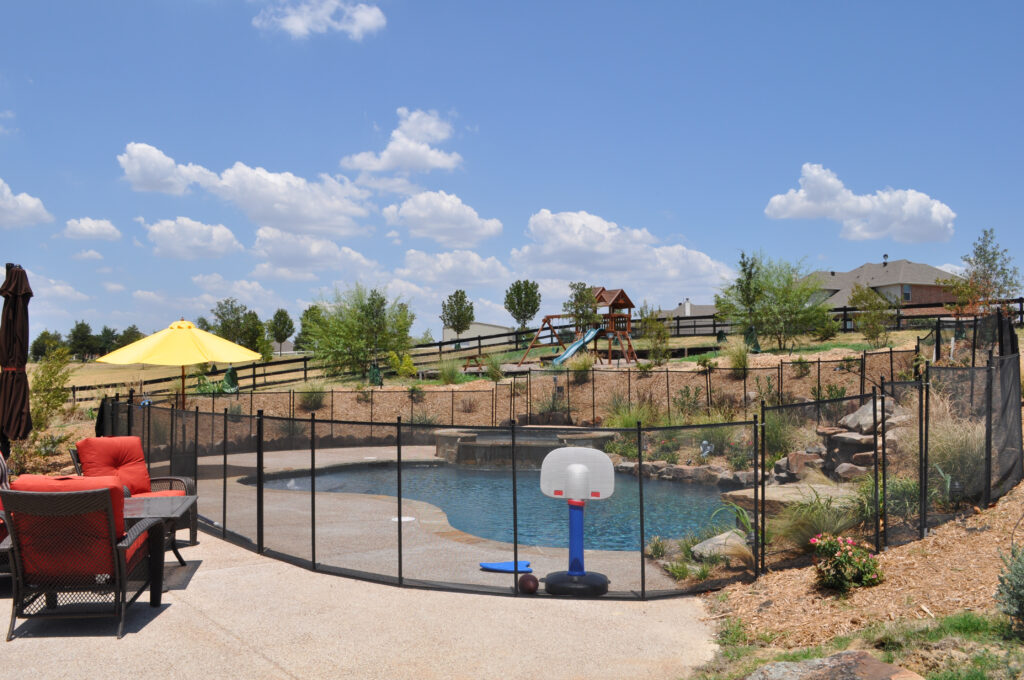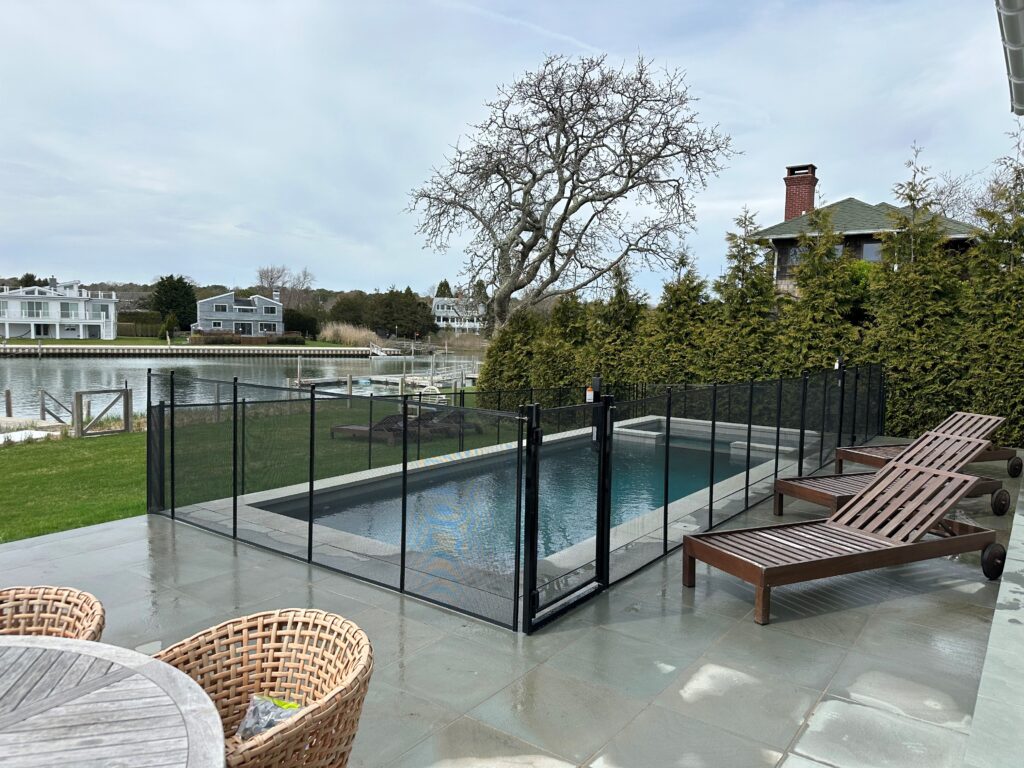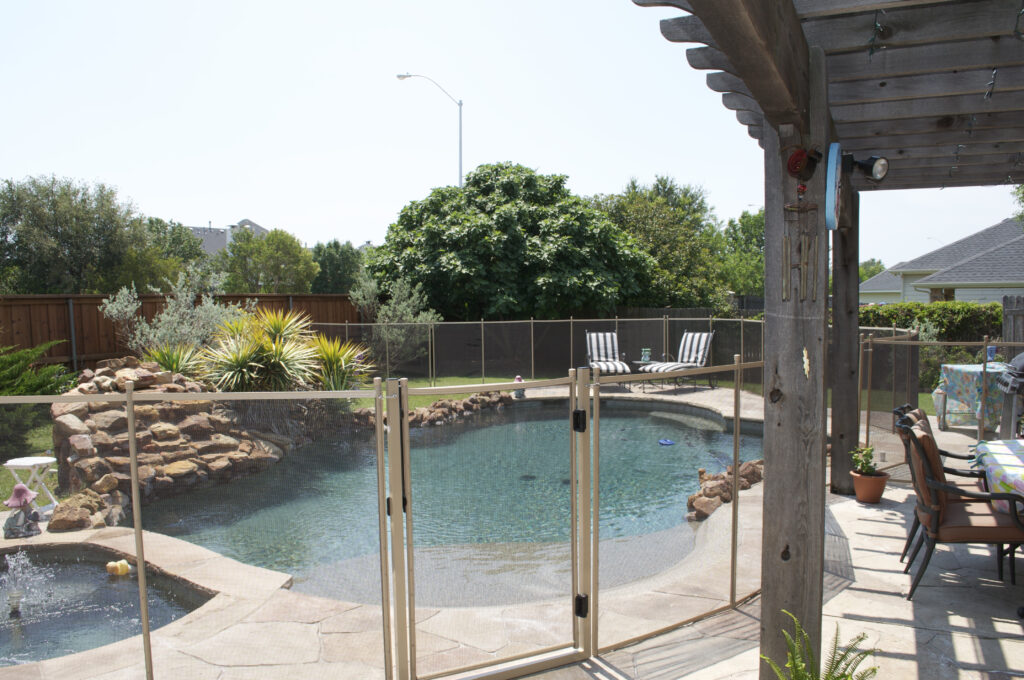Hurricane season in Miami isn’t a maybe, it’s a when. Every year storms barrel through South Florida with the potential to do serious damage to homes, yards, and anything left unsecured. For families with backyard pools, knowing what to do with a pool fence before a Miami hurricane should be a key part of your storm prep checklist.
These fences are incredibly common in Miami, lightweight, easy to take down, and designed to help keep kids and pets safe. But when a Category 3 hurricane is headed your way, even a mesh fence can become a hazard if left standing. Damage to the fence, your pool deck, or even nearby property can happen fast if your fence isn’t properly maintained or secured.
We’ll walk you through everything you need to know about preparing your pool fence before a storm hits.

Most people think about their windows, patio furniture, and roof when prepping for a hurricane, and almost exclude the most important part- the pool fence.
Even though mesh fences are lightweight, they’re still made with aluminum poles and tension-based systems. When left up during strong winds, they can bend, snap, or be torn completely out of the ground, turning into flying debris that damages your yard, pool equipment, or even your neighbor’s property.
After a storm passes, your pool may be full of debris, without power, or even without supervision. If your fence is down or damaged, kids and pets are at much greater risk. A fence that’s still standing, correctly and securely, can help prevent additional accidents once the storm has cleared.
If you’ve invested in a removable mesh pool fence in Miami, the good news is you already have one of the safest and most storm-friendly barrier options. But to make the most of that flexibility, you need to follow these steps before the winds start picking up.
If you’re still unsure what to do with a pool fence before a Miami hurricane, take it down. Leaving it up might seem harmless, but strong winds can turn even a lightweight mesh panel into a dangerous projectile.
For safe removal, you’ll need to:

The gate is the most important and most sensitive part of your fence. It includes the self-closing hinges and the MagnaLatch locking system, which keeps your pool area secure year-round. During hurricane prep, it deserves a little extra attention.
Start by removing the gate if it’s not permanently mounted. Lay it flat on a shelf or table, not upright against a wall. This helps prevent the frame from warping, especially if your storage area gets humid or experiences movement during a storm. A flat, secure surface is always better than leaning it in a corner.
Whatever you do, don’t stack anything on top of it. We’ve seen too many people casually place pool toys, tools, or boxes on the gate without realizing that even a little weight can throw off the hinges or misalign the self-latching mechanism. It only takes a small shift to affect how it closes and locks.
Now, if your gate is bolted into a wall or some kind of fixed post, don’t force it out. It’s best to call your installer or fence provider; they’ll tell you whether it can be safely removed or if it should be reinforced instead.
Once the storm has passed and it’s safe to step outside again, take a deep breath, but don’t rush to reinstall your pool fence just yet. A quick, careful inspection can help you avoid long-term damage or safety issues. Think of this as your post-hurricane fence checkup.
Start by walking the perimeter where the fence was installed. Take a close look at each core-drilled anchor sleeve. If there’s any debris, sand, or leaves inside the holes, clear it out gently. You’ll also want to look for signs of cracking or chips in the surrounding concrete, pavers, or pool deck. Hurricanes can shift more than just trees, so if an anchor looks misaligned or feels loose, don’t force a pole into it. It’s always safer to have it evaluated before reinstallation.
Once things are clean and dry, you can begin reassembling. As you reinsert each pole into its anchor, make sure it sits securely and doesn’t wobble. Reclip the panels carefully, checking that the tension feels even all the way around. Uneven tension can create sagging spots that reduce both security and visual appeal.

Knowing what to do with a pool fence before a Miami hurricane can make all the difference. Your pool fence might not be the first thing you think about when a hurricane is approaching, but it plays a much bigger role than most realize.
Taking the time to remove your removable mesh fence, store it properly, and check everything carefully after the storm clears isn’t just about protecting the fence itself. It’s about keeping your pool area safe, reducing damage, and making post-storm recovery a little less stressful.
A few simple steps go a long way in helping your fence last longer and work the way it’s meant to. In a city like Miami, where hurricanes are part of life, that peace of mind is always worth it.
Please fill out the form below with your information. Your local dealer will be notified about your inquiry.
Please fill out the form below with your information. Your local dealer will be notified about your inquiry.